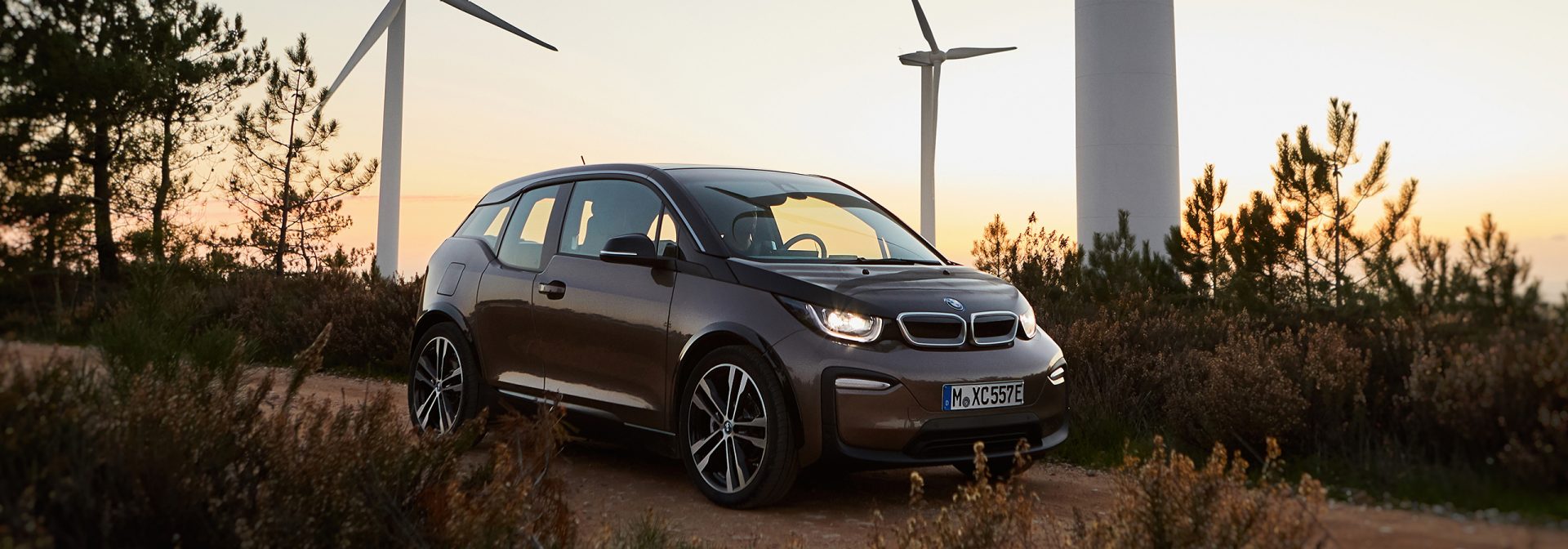ELECTRIC CARS – A GOOD CHOICE FOR THE ENVIRONMENT.
Anyone who buys a plug-in hybrid or an electric car is clearly doing their bit for the environment. These vehicles already have a much smaller carbon footprint than models with a petrol or diesel engine. But environmentally-friendly electric cars have yet to realise their full potential: They still have a lot to offer.
In order to optimise its vehicles’ carbon balance, BMW Group engineers consider all major variables in the development phase. The drive train (petrol, diesel, plug-in hybrid or electric) is just one part of it; the carbon footprint is also crucial – taking into account energy consumption during the entire lifecycle: from procurement of materials to the supply chain, from manufacturing at the BMW Group plant to producing fuel and charging electricity; all the way to recycling, where the value cycle can be closed again.
When a mid-sized electric vehicle with a lithium-ion battery leaves production these days, it does so with a carbon cost that is roughly 60% higher than a diesel*. This is due to the use of lithium, cobalt and manganese – the basic elements for high-voltage batteries – which can only be extracted and processed using a great deal of energy. Electric vehicles make up for this during the customer usage phase, of course. They do so most effectively in precisely those areas where combustion engines – petrol or diesel – generate around 70%* of their lifetime emissions: over short distances and in the city.
BMW Group engineers are also very interested in factors such as size, weight and a vehicle’s range. Plug-in hybrids (so-called PHEVs), which combine the advantages of an electric drive train with those of a petrol or diesel vehicle, are especially beneficial for commuters and customers who regularly use their car in urban areas. In the city, PHEVs benefit from the clean electric drive train and, over longer distances, from a combustion engine with no restrictions on range. Their carbon footprint is much better than that of a diesel – provided customers use electric mode often and charge the vehicle battery frequently.


PHEVs and electric vehicles achieve an optimal carbon balance when they are charged exclusively with electricity from renewable energy sources. Electricity production in Europe currently still generates average CO2 emissions of approx. 350 g/kWh. Users can already make sure they use green electricity for charging, but regular electricity will also become increasingly green over the coming years. As a result, the already positive CO2 balance of electric cars and plug-in hybrids, compared to petrol and diesel, will only continue to get even better.
Summary:
Over 200,000 km, the total carbon footprint of a mid-sized electric car is around 30 percent smaller than that of a comparable vehicle with a diesel combustion engine. If the electric car runs on green electricity alone, the improvement is around 65 percent.
*All information in this article is based on calculations made by the BMW Group for mid-sized vehicles with a diesel, petrol plug-in hybrid or electric drive train over 200,000 km.






